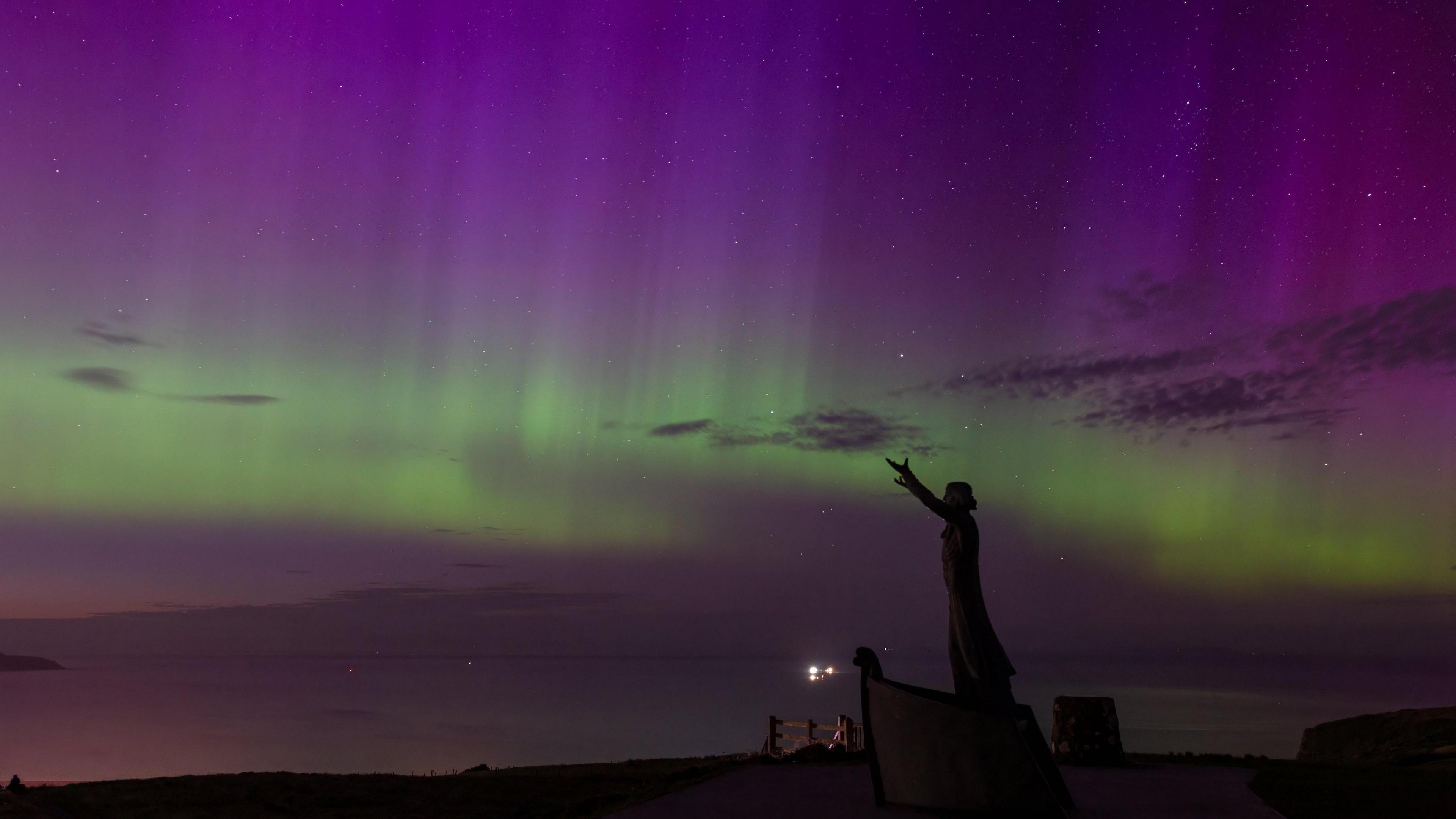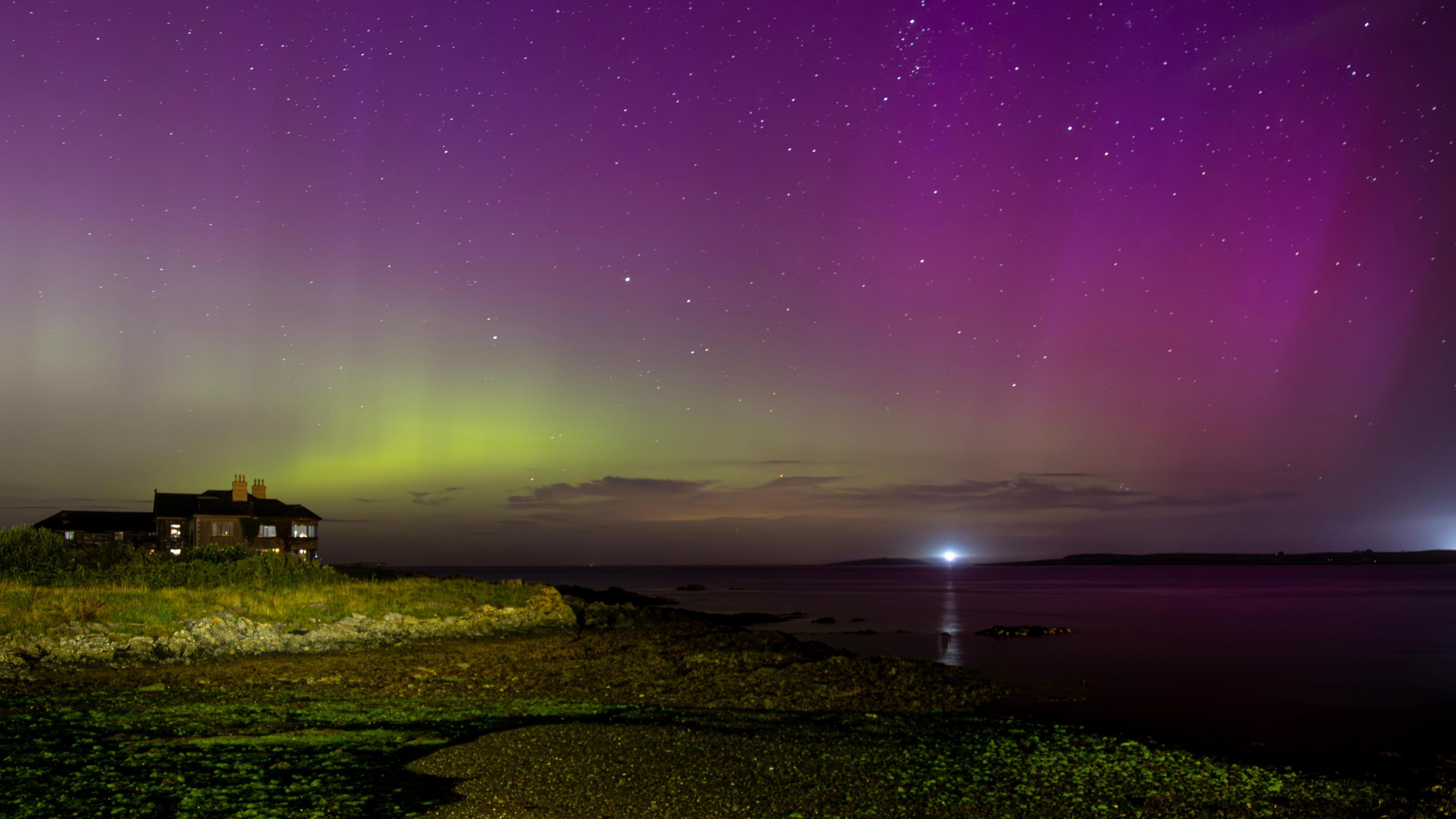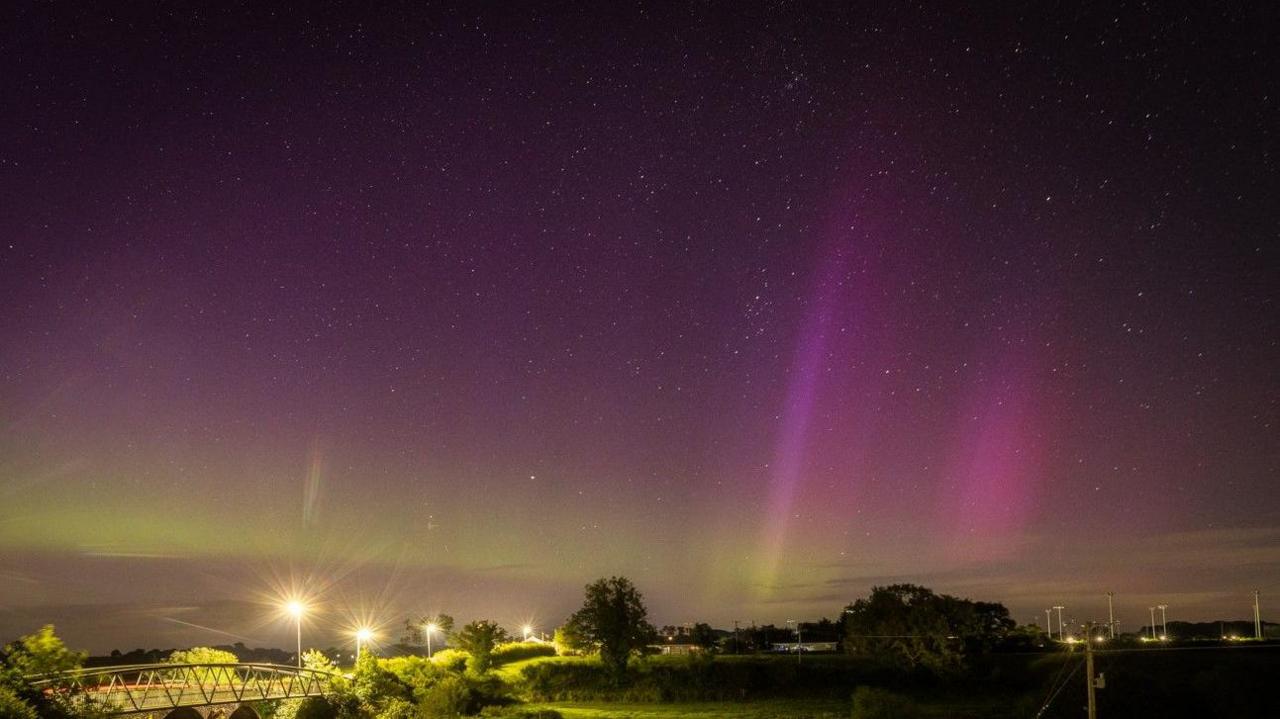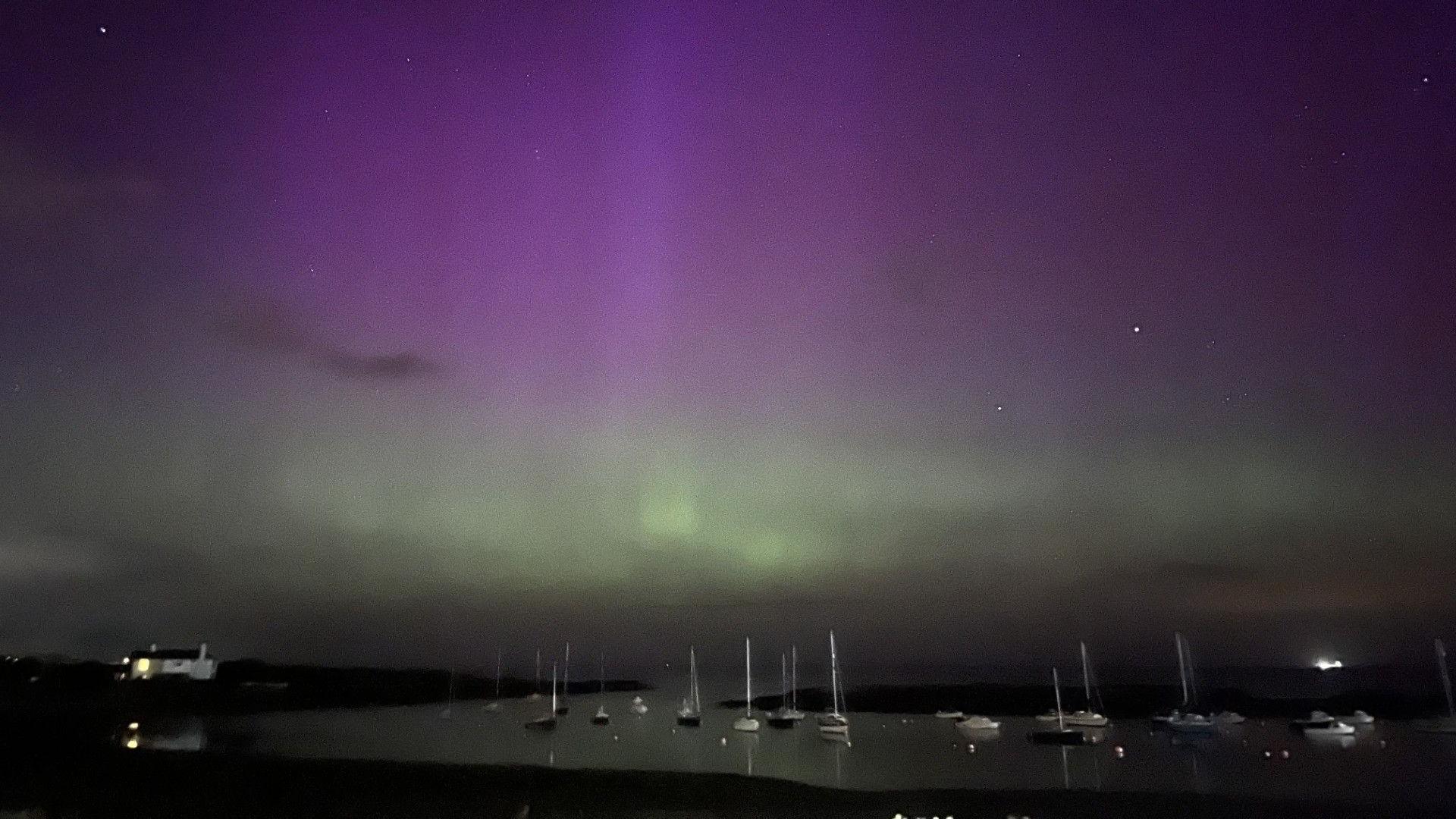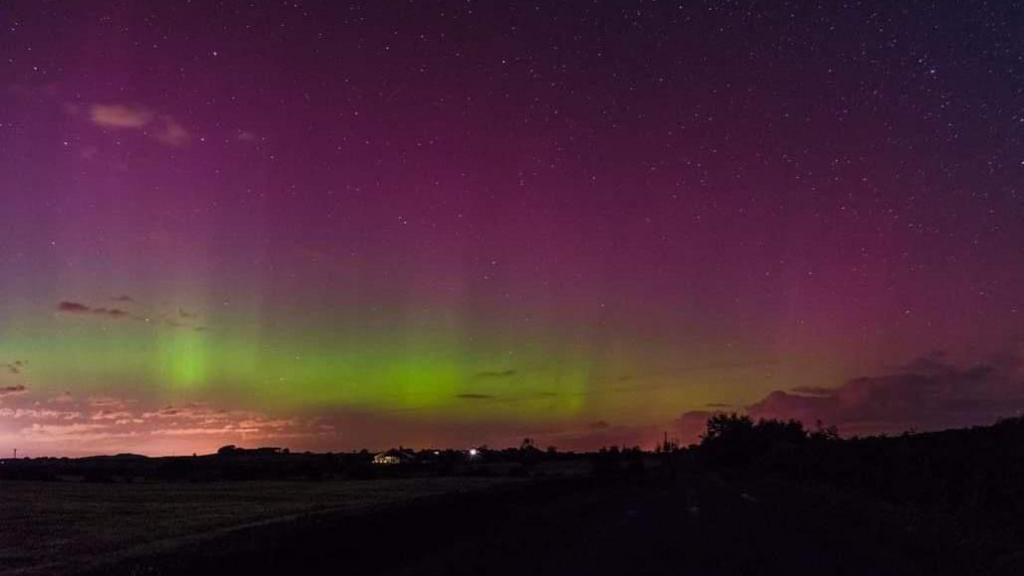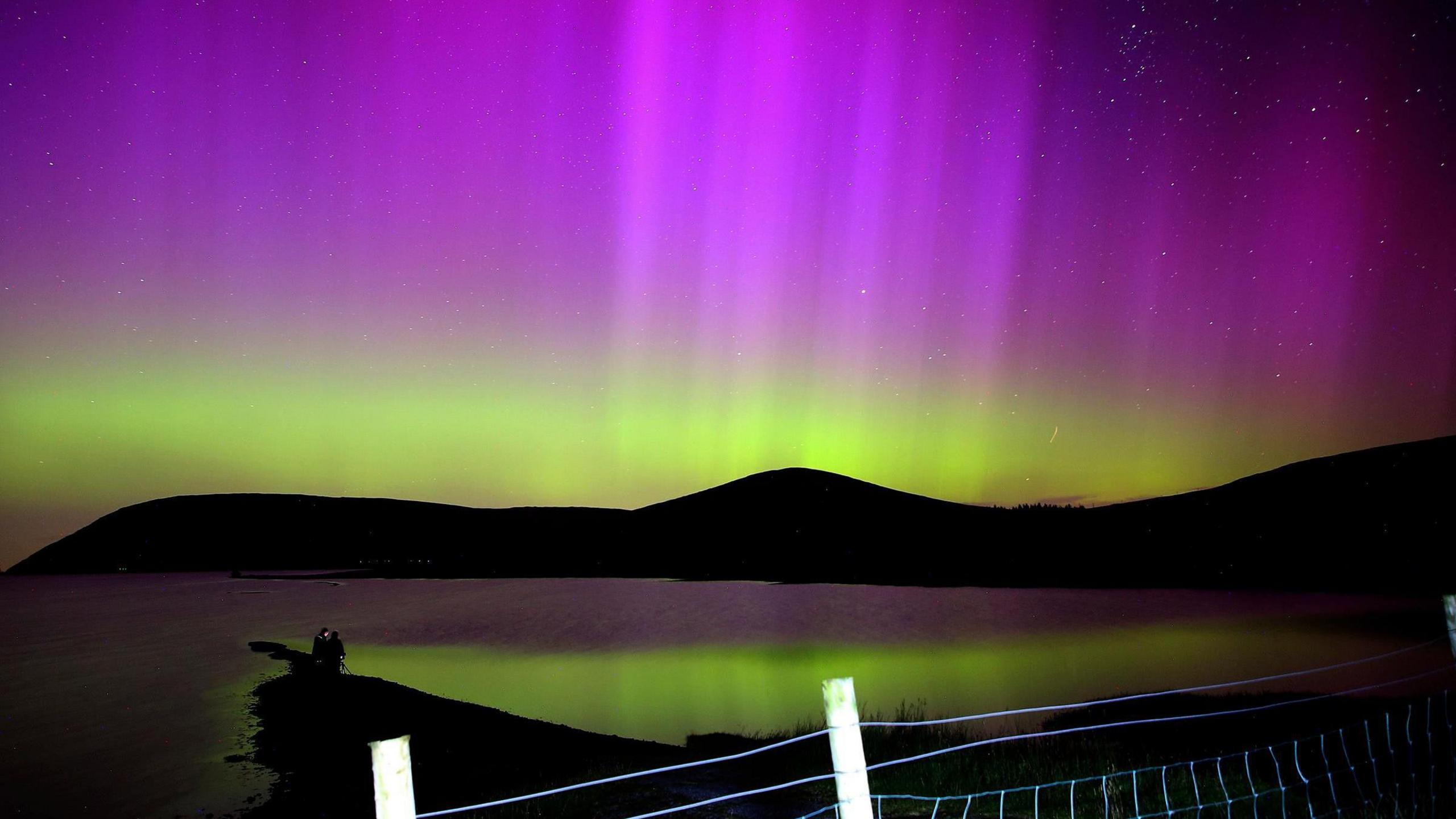Spectacular Northern lights light up Irish skies
- Image source, Sharon Cuatriz
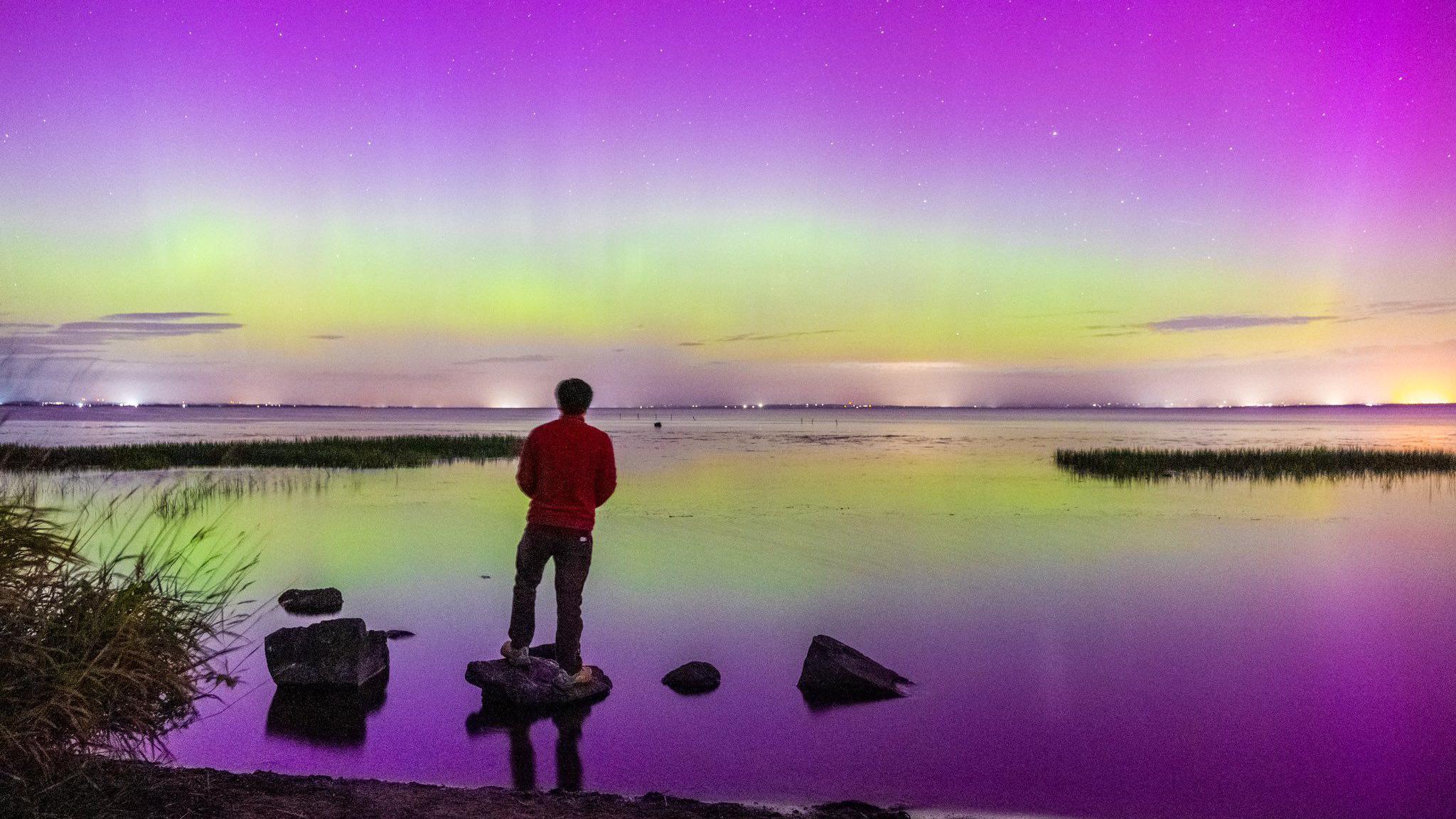
Image caption, Taken by Sharon Cuatriz, this photo shows the Northern Lights over Derrytrasna, County Armagh
1 of 9
- Published
The Northern lights lit up Northern Irish skies on Monday night before the cloud and rain pushed in.
Weather watcher photos from across the country show the dazzling lights, also known as the Aurora Borealis.
Skies will be clear again overnight on Tuesday but the activity is expected to taper off today.
As the UK is south of where the natural aurora belt occurs - in Norway, Iceland and Greenland - it takes a strong geomagnetic storm to bring the belt southwards directly over the UK.
KP numbers - which measure the strength of aurora - will drop this morning and remain at three or four overnight, below G1 geomagnetic storm strength.
In comparison, the KP number was up around six last night.
The higher the KP number, the better the chance of seeing an aurora display, subject to Earth’s cloud cover.
So unfortunately, there may not be much to see on Tuesday night or Wednesday morning.
What are the Northern Lights?
- Published2 January
Northern Lights dazzle in Irish skies
- Published11 May 2024
What causes the Northern Lights to appear?
The Northern Lights appear as bright, swirling curtains of lights in the night sky and range in colour from green to pink and scarlet.
It is caused by charged particles from the sun hitting gases in the Earth's atmosphere.
The colours occur due to different gases in the Earth's atmosphere being energised by the charged particles.
The two most common gases in the Earth's atmosphere are nitrogen and oxygen. Oxygen atoms glow green - the colour most often seen in the Northern Lights, while nitrogen atoms emit purple, blue and pink.
The most impressive auroras occur when the Sun emits really large clouds of particles called "coronal mass ejections".
Related topics
- Attribution
- Published13 August 2024


